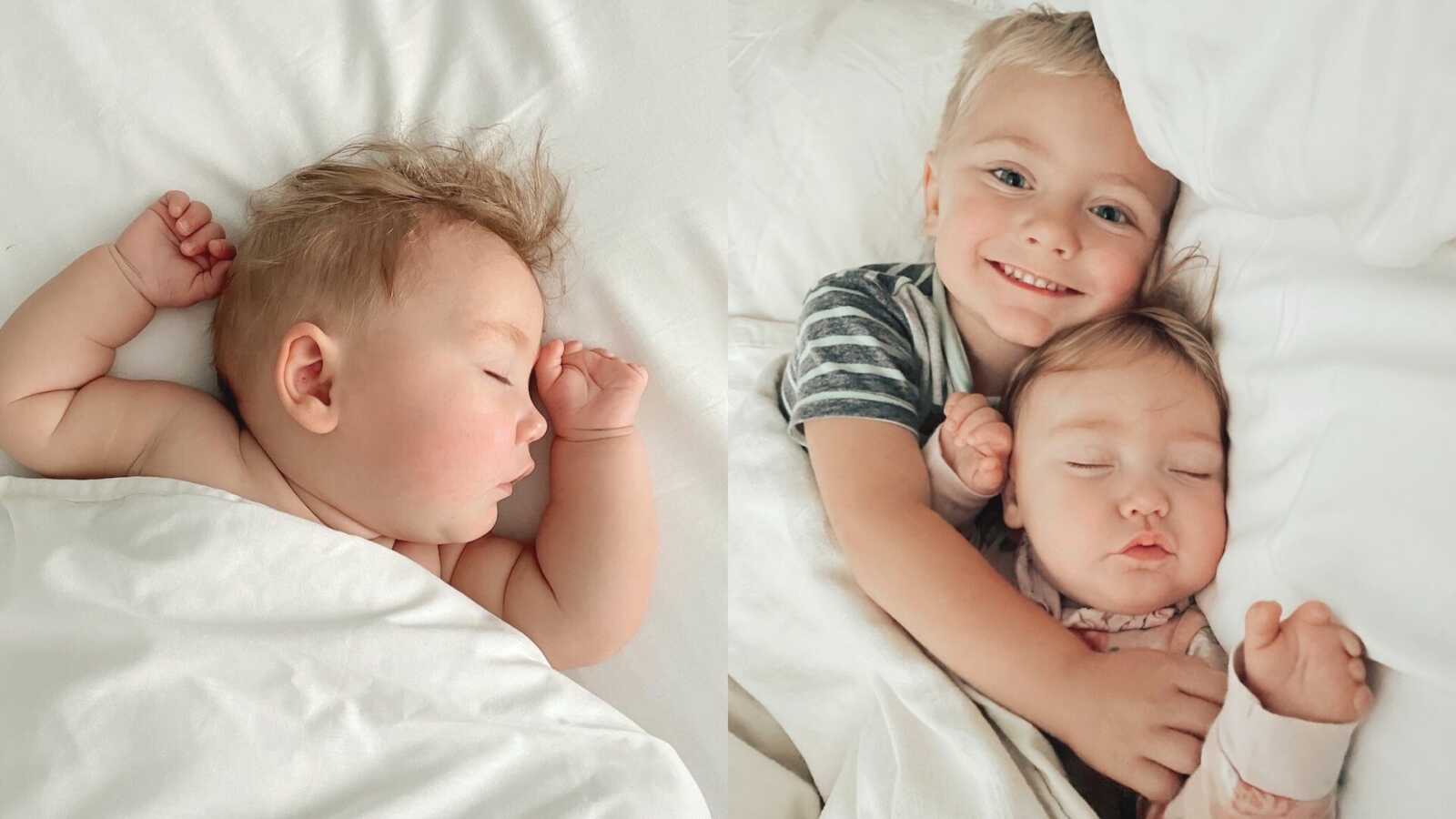“There are often little moments that define our lives.
Within the big momentous events of a graduation, wedding, or birth there are often fleeting moments that, when we recall later, prove to be pivotal points in our journey.
This moment was one of mine.
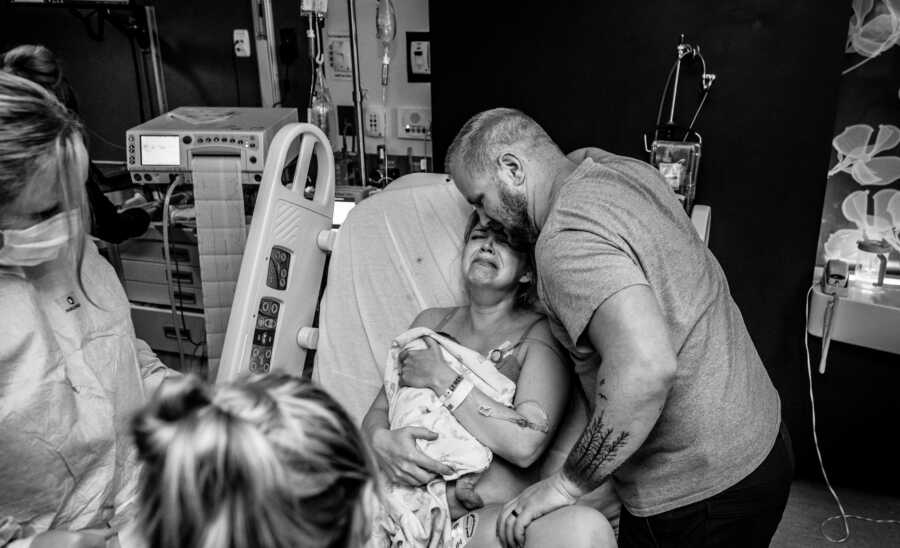
It was the moment I went to uncurl Holland’s fingers on her left hand and realized she had none. This moment encompasses the grief, fear, uncertainty, and guilt I swam through upon the realization that my daughter was born with a disability. Immediately, my mind began drowning in thoughts of all that she wouldn’t be able to do or accomplish.
Monkey bars. Piano. Cello. Crochet. Typing. Paint her nails.
She wouldn’t become a nurse, a surgeon, or any other profession that requires the use of fine motor skills and the dexterity of her fingers. Where would she wear her wedding ring? How will she tie her shoes, button her pants, zip her jacket, or fasten her bra?
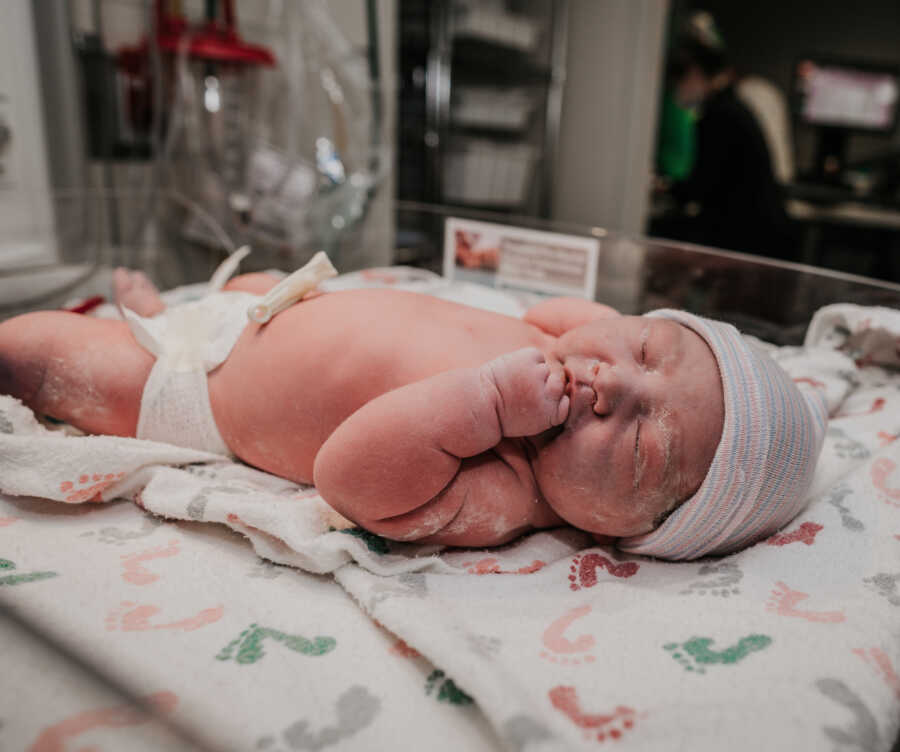
In this pivotal moment, I was grieving the childhood I thought she’d have. Grieving the simplicity of immediate acceptance when she met other children on the playground or at the park. Grieving the realization that she would be an easy target for children to tease and bully and the toll that teasing could take on her over time. There was a deep wave of grief when I realized that one day, someone may pull back their outstretched hand when they saw her nubbins reaching for it. And that pang of rejection and disgust from another about her limb difference could fester in her mind, creating doubt and shame about a part of who she is.
I feared that her limb difference was a symptom of a greater disorder or syndrome that could’ve impacted her heart, lungs, or brain. Our care team was of little assurance and comfort, stealing uneasy glances at one another between my heaving sobs. Their words left welts across my heart instead of providing comfort. The nurse responsible for Holland’s initial assessment made a joke out of her limb difference, laughing as she stated, ‘At least you know she’ll be right-handed!’ while the neonatal nurse practitioner emphasized, ‘There’s nothing else wrong with her.’ While these interactions seemed insignificant and fleeting to them, they set the tone for how I believed others would perceive her and her difference, and in turn, how I should perceive her, as though through a veil of inadequacy and of something being wrong with her.

When we asked about a diagnosis, we were told doctors didn’t know, and that we were being referred. There was so much uncertainty that I couldn’t sleep not knowing what Holland’s hand meant for her overall well-being. Around two in the morning, I woke my husband up with a picture on my phone and the Boston Children’s Hospital website pulled up, ‘I think I found what Holland has. It’s not genetic, and it’s not my fault. It’s called symbrachydactyly, and it’s rare.’
As he took everything in, he too began researching with our newfound information. Only once the pediatrician rounded in the morning, were we given a formal diagnosis of symbrachydactyly.
Symbrachydactyly is a rare congenital malformation of the hand which impacts primarily the fingers, hand bones, wrist, and sometimes forearm as well as the muscles, tendons, and ligaments. It is not genetic but is theorized to be caused by an interruption in blood flow during weeks four to eight of gestation. This interruption in blood flow can be in the form of a microclot or a structural abnormality of the subclavian artery on the affected side of the limb difference. During this time of gestation, when the malformation occurred, Holland was only the size of a poppy seed. Can you sit with that for a moment and think about how tiny her vascular system had to be at that time? Lean into how incredibly small the microclot had to have been or how fragile her subclavian artery was. It’s a bit wondrous to think about, isn’t it?
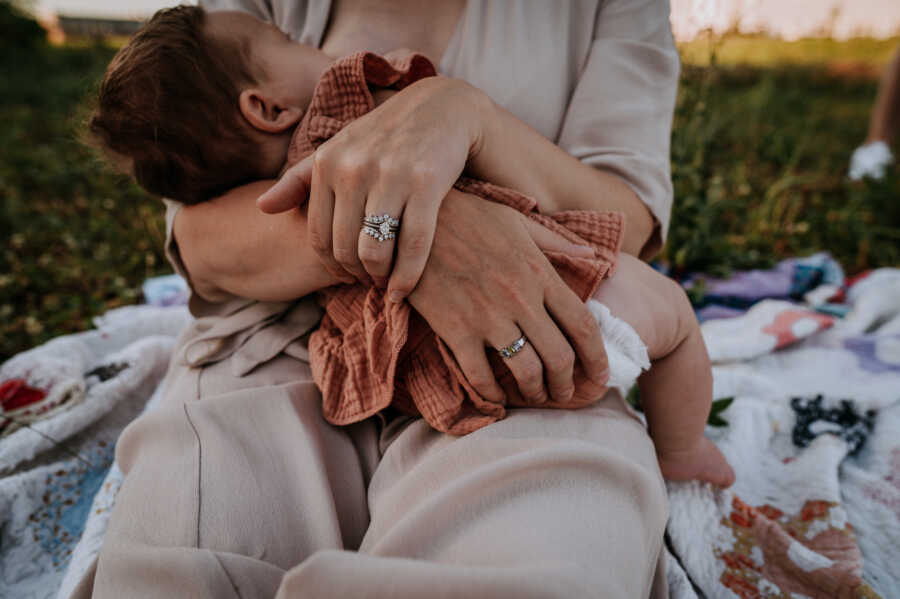
There are several different types of symbrachydactyly, and Holland’s case is considered to be monodactyl symbrachydactyly. Just as the name implies, ‘mono’ meaning ‘one,’ and ‘dactyl’ meaning ‘digit.’ Holland only has one digit on her left hand; a small, underdeveloped thumb. Where her fingers would be, she instead has nubbins, which are essentially little skin sacs that have no bones in them. She is able to move her nubbins, and draw them into her palm or relax them, but they do not aid her in gripping objects, as she pinches her little thumb against her palm.
The first few weeks postpartum were hard. Navigating how to share Holland’s diagnosis with friends and family while still reeling from the earth-shattering reality of having a child with a disability left me struggling to bond with her. Of course, I loved her, but it was an obligatory love, forced and slightly foreign. Due to my knowledge as an OB nurse, I knew I was experiencing delayed bonding. I cared for her, nursed her, and loved on her, but those all-consuming feelings of complete adoration came later. And that’s okay because our timeline is our own and I recognize that even though I experienced delayed bonding, it is not a testament or measure of how much I love her, it was simply a trauma response because my mind had processed Holland’s birth as traumatic.
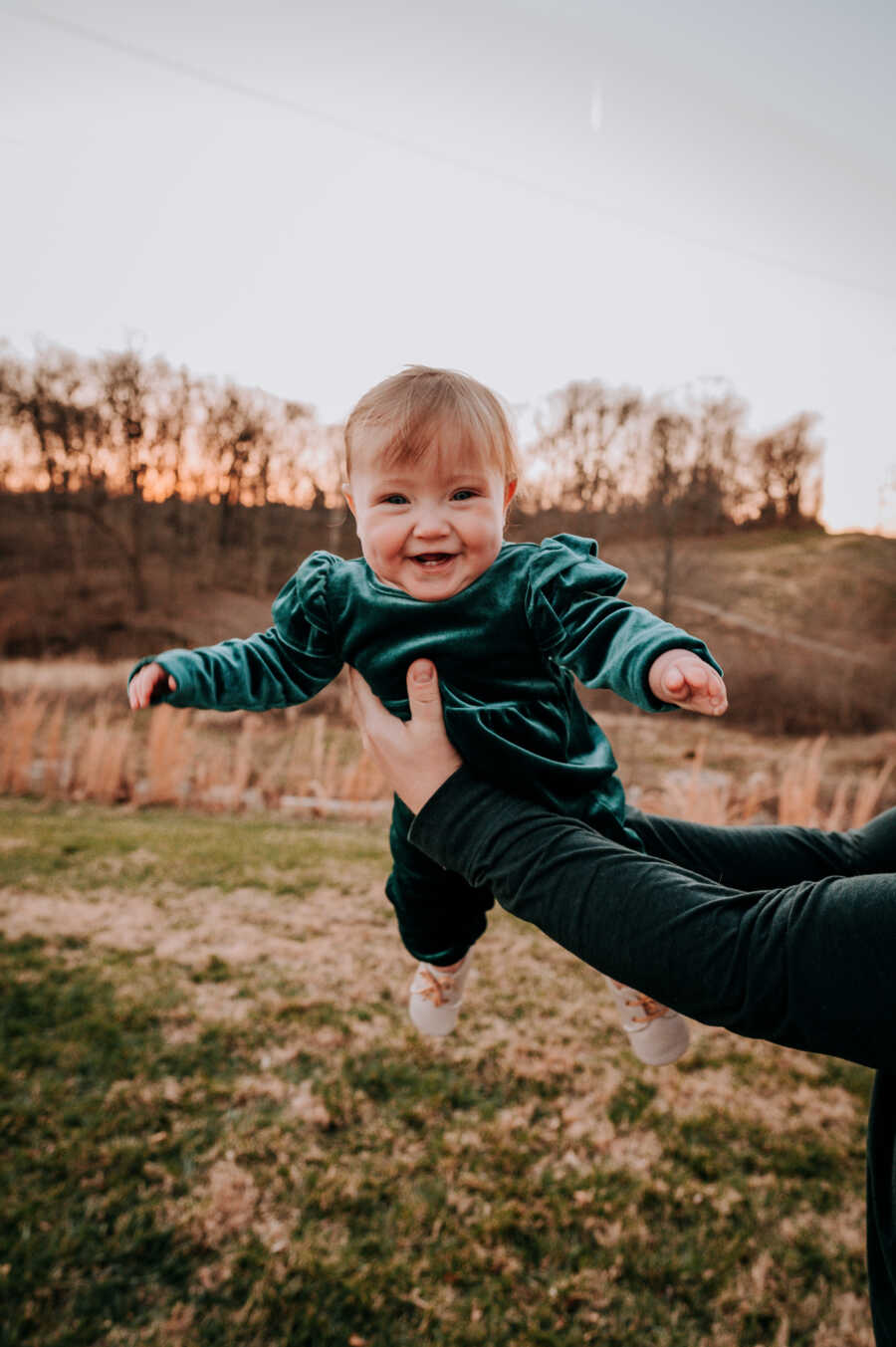
Each time I had to tell another friend or family member about Holland’s limb difference, I was overcome with feelings of shame and guilt. Shame that I was the mother of a little girl with a disability, and guilt that it was my body that had failed her. I worried about what questions they would have and if their questions would have an accusatory undertone. I worried about if they’d be accepting of her, or if they’d treat her differently or less than because of her limb difference. So I did the best I could with the limited resources I had, and I threw every bit of education at them that I could. Hoping that if I taught them enough and answered all their questions, it would help to normalize her limb difference for them and they would see all of her, not just her hand.
As I surrounded myself with more education about limb differences and disability, I found comfort in the stories of others. Adults with limb differences who were comfortable in their bodies and encouraged others to ask questions to help destigmatize this traditionally taboo topic. The more I read and learned, the more the shame regarding Holland’s hand quickly faded, instead morphing into shame about my own ignorance and ableism. I was ashamed of myself for having been so incredibly unaware about the capabilities and adaptability of those with limb differences and other disabilities. I was ashamed of the unconscious value I had placed on those with disabilities, as a result of my own lack of education and modeling of society’s expectations regarding what is ‘normal.’
So I asked myself, how did this happen? And the answer was clear: growing up, these ‘difficult’ or ‘impolite’ topics were never talked about, and questions about them were silenced. There was no representation, inclusion, or visibility. There was no normalization. There was only fear and ignorance because more often than not, people fear what they don’t understand.
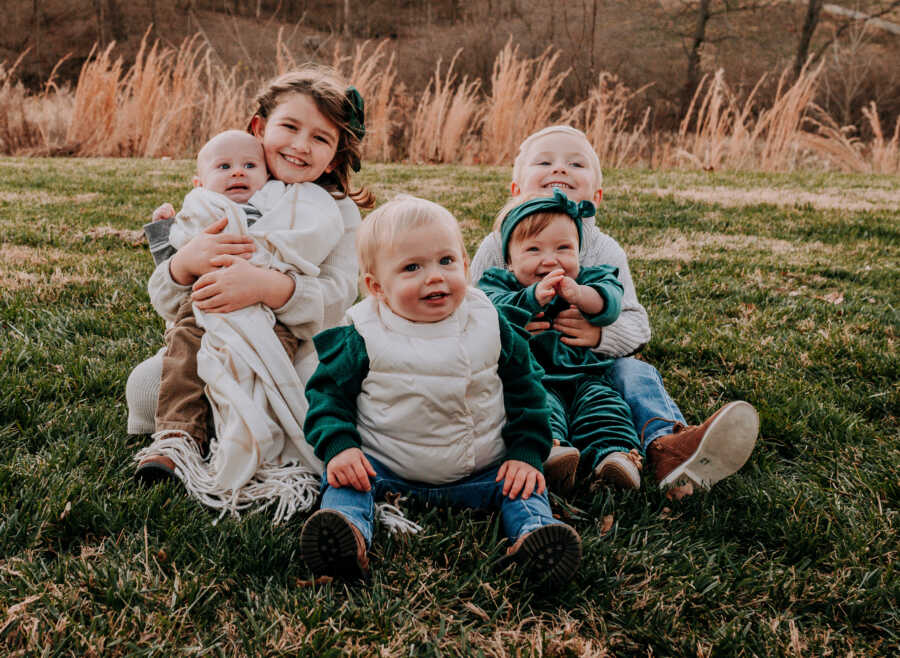
And so the stigmas were perpetuated within my view of this world until it was my daughter’s face staring back at me, embodying the stigmas and preconceived notions of what disability means. How my desires for her and what her life could be did not align with those notions, and how I was forced to grow out of my shame and ignorance or wither there. And so I chose a journey of growth, acceptance, advocacy, and education.
I firmly believe that education is the key out of the shadows from this stigmatized, culturally taboo subject. Seeking out education in the forms of diversifying your social media feed by following disability advocacy accounts and buying inclusive books for your child’s home library are great ways to help bring light to this shadowed topic. Books that represent different bodies, abilities, and characteristics allow children to learn about differences organically and ask questions without the pressure of navigating their inquisitive questions in front of a stranger with a disability. As you navigate those questions, remember to use inclusive neutral language, have a confident tone, and never shush or silence them. When you shush or silence their questions, you are further perpetuating the taboo ideology that so many are working to break. There is so much work to be done to help change the preconceived notions about what it means to have a limb difference or disability when, in reality, the only things limiting them are the assumptions and expectations made by others, for to have a limb difference is to be limb-itless.”
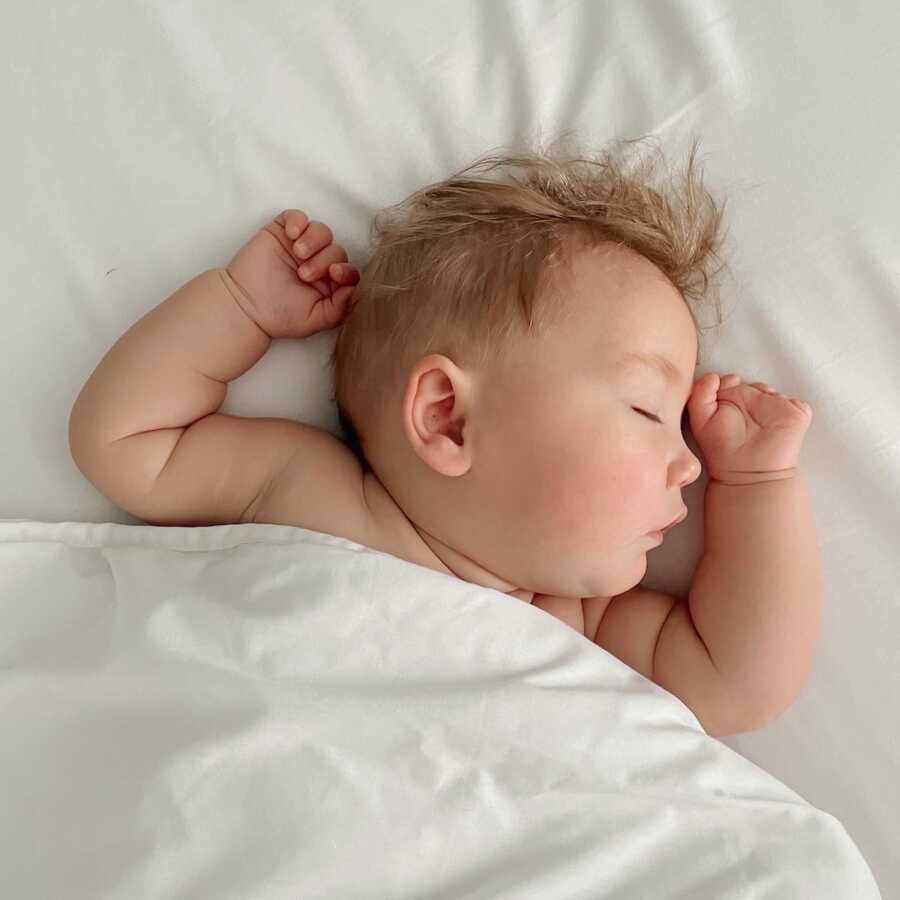
This story was submitted to Love What Matters by Michelle Ross. You can follow their journey on Instagram. Submit your own story here and be sure to subscribe to our free email newsletter for our best stories.
Read more stories like this here:l
Provide beauty and strength for others. SHARE this story on Facebook with your friends and family.

